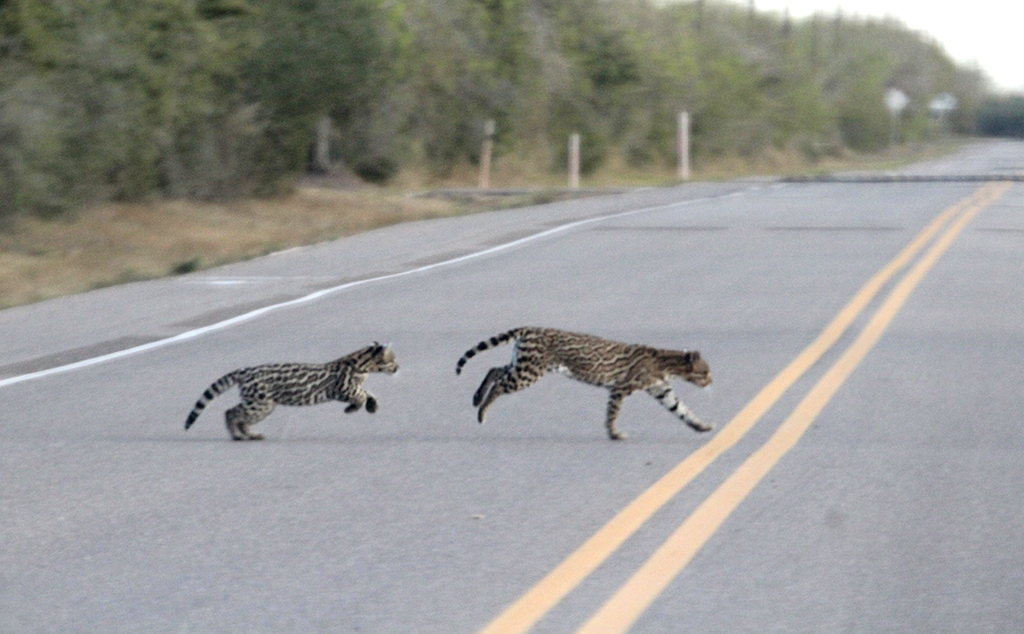by John Jefferson
That’s a photographic term meaning have your camera set on a likely aperture to get enough depth of field and then “Be There!”
The “Be There” part says the most to me. If you’re not “there”, you’re not likely to see what you might want to photograph. To me, it’s also my favorite excuse for being out in the brush. I’ve never taken a wildlife image sitting in front of my computer – except with a trail camera set up somewhere else. And even then, most trail cameras lack the quality of a good camera.
I have a new email friend that manages to “be there” often enough. That helped him take the accompanying photo of a mamma ocelot and her kitten hot footing it across a road on the Laguna Atascosa National Wildlife Refuge (LANWR) this past February.
LANWR is 120,000-acres in Cameron County at the lower tip of Texas near Harlingen. It’s a wild kingdom of tangled brush that’s home to 60-80 of the last ocelots in America, and other interesting critters. A few more ocelots live on nearby private ranches. Google the refuge for hours of operation.
Having stalked wildlife over much of the Southwest, I stared at the image for several minutes wondering how he got it. Most Texans have never seen an ocelot. They’re seldom viewed, and then often for only a glimpse. One doesn’t just drive through a refuge, see an endangered wildcat, raise a camera, and get a quality image.
With the help of George Garcia at the LANWR, I tracked down the photographer in Minnesota — Jake Strouf. He and his fiancé are “hobbyists and wildlife enthusiasts.“ They’ve been in refuges and parks in eight states, plus twice in Texas. They didn’t expect to see ocelots but wanted to try.
They were on the main refuge road south of the Visitors’ Center, driving slowly about 7:30 a.m. The speed limit is 25-mph and it’s speed bump – enforced. She saw the ocelot and it ran across in front of them into the brush. They hoped it would come back out – an unlikely imagining. But, then it did. And that gave Jake time to get ready.
It went back and got its kitten. And they dashed back in front of his lens for several seconds and as many frames of priceless images as he could get.
That explains the rare, attached image. A retired game warden friend termed it “The picture of a lifetime.” I agree.
Jake was using a Tamron 200-400 lens on his Canon Rebel T-5.
I previously wrote about ocelots and a gentleman from Victoria called to tell me had seen three. Two were roadkill and the third one sped across in front of him one night. That tells me that for every three you see, two will have been hit by vehicles. Probably more.
Jake and I agree that the speed limit outside the refuge should be lowered.
Drive slowly, carefully, and maybe you, too, will “Be There” someday!
JJ




